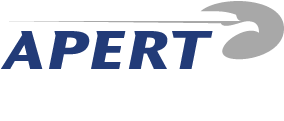Company Auditing/Check-up of Work Safety Management
“Compliance to Work Health & Safety Regulatory Standards (NRs) in Brazil is mandatory for private and public companies, as well as for direct and indirect public administration agencies, and also by the divisions of Legislative and Judiciary Powers.”
We, at Apert, consider that a well-managed company, or a company having a solid process management system, in order to make the best use of its inputs, must make the best use of its human, material, and financial resources, to deliver a better product or service. To accomplish that, it needs quality management, environmental management, social responsibility, and work health and safety management.
For this purpose Apert, through its technical team and partners has developed a method, compliant to Chapter V of CLT (Brazilian Consolidation of Labor Laws) – Sec. 154 through 201 of Law #6514 and ABNT’s Regulatory Standards (NR 1 through 36), to diagnose, by means of a thorough survey, to what extent companies are structured regarding compliance to the standards applicable to their industry. Our survey covers the following:
1) Characterization of the company and its assets
- Industry/Trade classification
- Regional features
- Qualification of facilities on their condition and working life cycle
2) Overall appraisal of the work environment conditions regarding safety
- Work environment;
- Toilet facilities;
- Locker rooms;
- Lodging facilities;
- Cafeteria;
- Stairs, ramps, and passageways;
- Materials handling and people transportation;
- Freight and passenger elevators;
- Electrical installations;
- Miscellaneous equipment, machines & tools;
- Buildings;
- Personal Protection Equipment;
- Signage;
- Potable water supply;
- Housekeeping;
- Ergonomics.
3) Identification of issues related to Environmental and Work Hazards
- Identification of chemical and biological hazards, if present, related to facilities, methods, and processes;
- Details of environmental hazards regarding: sources, functions at risk, headcount exposed, activities involved, type of exposure, possible health hazards, existing engineering controls;
- Quantitative assessment of environmental hazards and engineering controls;
- Identification of occupational. ergonomic, and accident hazards.
4) Qualitative and quantitative analysis of existing fire protection
- Emergency exits: quantity, type, size, location and signage, among others;
- Escape routes in case of an emergency: stairs, ramps, passageways, etc.
- Emergency procedures in case of fire: machines and equipment shut-off, alarms;
- Firefighting equipment: fire extinguishers (type, quantity, location, signage, sprinklers, expiration dates, inspection).
5) General recommendations and preventative action suggestions
- Based on all NRs.
6) A more thorough survey, in case of plants having boilers, pressure vessels, furnaces, dangerous or unhealthy operations, explosives, flammable liquids, industrial waste
